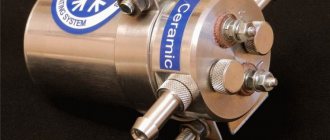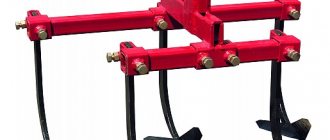For many drivers during the period of winter operation of the car, the problem of cold engine starting is well known. As a rule, it is most difficult to start the engine in severe frosts. At the same time, the ease of starting a cold internal combustion engine is influenced by many factors, ranging from the battery charge level or the condition of the spark/glow plugs to the viscosity of the engine oil in the crankcase of the power unit.
As for the oil, a lubricant that is too viscous makes it very difficult for the crankshaft to rotate; as a result, the starter is unable to spin the crankshaft to the required frequency, the battery charge is quickly consumed and the car cannot be started.
It is also important to consider that even if the engine starts, but the oil is too thick, in the first seconds after starting the engine experiences oil starvation, since proper lubrication does not occur. As a result, accelerated wear of the CPG, timing elements and crankshafts is observed.
To solve the problem, you can seasonally use expensive synthetic low-viscosity “winter” oils, however, this type of lubricant is not always suitable for a particular type of engine for a number of reasons. The main thing is a strong dilution of the oil after the engine reaches operating temperatures, leaks of oil seals and gaskets, a decrease in pressure in the lubrication system and increased wear of engine parts.
Another method is to preheat the engine crankcase before starting to get rid of a strong increase in the viscosity of the lubricant in a cold internal combustion engine. Let's look at this point in more detail.
Do-it-yourself 220V engine heating
According to experts, every person who understands car systems can assemble such a device on their own. So, he will need some details:
- basic spare parts for the heat exchanger;
- plates, which are then welded inside to increase heat exchange;
- a welding machine to weld seams that will become airtight;
- sheet asbestos, which is needed for thermal insulation of the device;
- asbestos liners, which eliminate the effect of the spirals closing on the body;
- a “nichrome” spiral for embedding it inside the device;
- additional heating elements;
- studs, each at least 25 millimeters, to tighten the covers;
- sealed material to secure the already assembled heat exchanger;
- peneplain, designed to wrap around the outside of the structure for complete thermal insulation;
- relays that are needed to avoid draining the battery;
- toggle switches that appear on the side of the center consoles to turn them on.
In some cases, in order for the procedure to proceed correctly and quickly, you can additionally use antifreeze.
DIY preheater design
Few people know that a device for heating oil in the crankcase can be assembled with your own hands. Traditionally, the heater consists of a cylinder-shaped housing. The upper and lower cups are connected with M5 screws. A gasket is installed between the two elements, which guarantees the tightness of the structure.
Attention! As a gasket for a device that will provide heating, sheet metal is most often used.
The element responsible for heating the oil in the crankcase is placed in asbestos. It is best to use a 12V part of the vulcanizer as a heating element.
The heating element is fixed on several racks. They are brought out through the lower part of the crankcase. When installing the crankcase, you will have to slightly modify it, namely, remove some of the lower cooling fins. You will also need to drill holes with a diameter of 9 millimeters.
The device responsible for heating structurally consists of the following parts:
- top cup,
- bottom cup,
- bushings and washers,
- sealing material,
- M5 screw,
- asbestos,
- contact posts,
- crankcase bottom,
- heating element,
- nuts with size M6.
Heating - oil
Mazda tribute
Heating of the oil in the engine crankcase is carried out using a coolant or by electrically heating the bottom of the crankcase through an air cushion.
Heating the oil in oil tank switches is an important means of increasing their reliability at low temperatures. An analysis of the speed of movement of the contacts at different oil temperatures showed that at temperatures above O C the speed of movement remains practically constant. At temperatures from 0 to – 20 C the speed decreases, but at – 20 C it still seems acceptable.
The oil is heated to a temperature of 70 - 80 C, the oil is regenerated for up to 15 days, as a result its properties are restored, according to analysis, the flash point rises to 170 - 180 C, and the viscosity rises to 20 - 20 5 and the oil is subsequently used. Since the introduction of this system, about 15 tons of turbine oil have been restored and there is no longer a shortage of it at the compressor station.
Oil heating is carried out by electric heaters, the heating elements of which are mounted in circulation tanks or engine trays and are powered by electric batteries, or by special starting heaters - boilers that warm up the cooling system and run on the same fuel as the engine.
The oil is heated by electric current or hot air. The second method is preferable for equipment located outdoors. In addition to the usual use of hot air as a coolant in a special starting air heating system for the oil tank and oil coolers, hot air can be supplied directly to the apparatus and pipelines of the oil system and to the bearings of the units. This will prevent the occurrence of oil plugs, which can occur at very low outside temperatures. To prevent corrosion of the internal cavities of pipelines and especially the rotor journals, the air must be pre-dried. In some cases, it is advisable to add a sprayed inhibitor, such as dibutyl phthalate, to hot air, which increases the corrosion resistance of steel parts.
Heating the oil in the coarse filter with a coil increases the throughput of the filter when operating on cold oil.
The oil in the tanks is heated by steam passed through a coil. To maintain the required pressure in the oil line of the system between the pump and the oil tank, a pressure reducing valve is turned on.
Heating oils by fire or electricity, especially when preparing a mixture of winter oils with tractor kerosene, must be done in tanks with a water jacket.
Oil heating must be done in special water-oil heating tanks. Heating oil over an open fire is strictly prohibited.
The oil in the engine crankcase is heated using a coolant or by electrically heating the crankcase bottom through an air cushion.
Oils are heated: transformer oil up to 60 - 70 C; turbine up to 70 – 90 C; industrial up to 100 C. When cleaning oils without heating, the contact time should be increased.
The oil is heated using heating elements with automatic temperature control.
| Quenching tank. |
Heating of oil in quenching tanks is carried out using radiation gas, electric pipes or electric heaters located in the tank. To cool the oil, oil coolers are used, both located outside the tank and placed inside.
It is prohibited to heat the oil in the oil system of a gas turbine drive with an open fire. The power plant premises must be equipped with an automatic volumetric gas fire extinguishing system.
Security measures
To avoid failure of the electrical crankcase heating device, do not turn it on for more than 15 minutes, or when the engine is running. Before figuring out how to heat the engine sump with your own hands, you need to objectively evaluate your own capabilities. If you have the appropriate experience and skills, it is quite possible to make a heater at home.
I decided to make my own pre-heater for 12V engine oil.
The heater must be screwed into the engine sump drain hole.
I modified the standard plug: I drilled a hole deep, leaving 5 mm to the outer end. I cut the internal thread M14x1.5. I drilled a hole in the end with a diameter of 8 mm for a textolite bushing through which I will output the contact (+).
I machined a ribbed glass Dn=19mm long L=130mm from brass with a matching external thread M14x1.5.
I drilled a hole in it din = 10mm, hole length = 123mm (for a heating element with insulators).
The heating element is a nichrome wire with a cross section of 0.6 mm, about 2 meters long, wound on a 4 mm mandrel. Length when wound is 110 mm. The element resistance is about 1 Ohm. The color of the heating coil in the open air is dark crimson.
Insulators are ceramic fuse housings with an outer diameter of 10 mm and an inner diameter of 5.5 mm.
After assembly, I soldered the lid to the glass.
During testing
Today I installed it on my 2111.
Wire cross-section (+) 2x2.5mm stranded PVA. Length 2 meters. All connections, terminal and crocodile are soldered.
02.12.12 testing the heater on a cold engine at -24C.
Turned on the heating 40 minutes before launch. The pan “warmed up” to -5C (of course I expected more, but this is not -24C.
The battery dropped from 12.4V within 40 minutes of heating
I think the launch was successful. Previously, without heating, I cranked the starter longer and harder. When starting, I did NOT feel a “sagging” battery, there was enough charge.
The speed on the tachometer drops - I release the clutch.
Taking into account all of the above, it is necessary to make adjustments to the design: make an ash screen around the pan (glue it with a heat insulator), reduce the length of the heater wire by 2 times - as a result, the resistance will decrease by 2 times and the power will increase by 2 times BUT! and the current consumed will follow all this equipment. You can also reduce the length of the heater by 50% because There are suspicions that part of the heater is above the oil.
Heater assembly
To be continued... I'm thinking about heating the gearbox oil. The option with a drain plug won't work there, the crown gets in the way, I'll probably drill... cut...
Price for heating the engine 220V
Homemade pre-heater for a VAZ car engine
If you are sure that you will not construct an engine heater from a 220 volt network, then you will have to look for it on modern Internet resources. You can also find it on the automobile market, where you may find options according to your preferred price criteria.
When choosing heaters through online stores, it is better to find an option directly from the manufacturer. This is beneficial, because the pricing policy from the manufacturer is lower.
The price varies depending on what make and model of car you are looking for this device for, what brand and power you need it. Their approximate cost will vary from 1500 to 2500 rubles.
Operating principle of the pre-heater
Almost any car owner in the winter has found himself in a situation where he comes to the parking lot to pick up his car, and when he tries to start it, it won’t start . To avoid this situation in winter, install car heaters.
The main purpose of a pre-heater for a car during winter:
- Pre-warming of the engine without the participation of the car owner;
- Easier engine starting;
- Warming up the interior.
Winter, and with it temperature changes and severe frosts, is a harsh time for the engine . Negative temperatures affect the viscosity of the oil, lubricants lose their quality. All this leads to the fact that during a cold start, the power unit needs more effort to operate in the first minutes.
A pre-heater for a car is connected to the engine cooling system , and will drive coolant (antifreeze) through itself, heating it and directing it to the power unit. Thus, the engine is heated without starting it, and at the same time the interior. After all, it is in winter that motorists often experience problems starting the engine.
Even at the lowest ambient temperature, warming up takes no more than 15-20 minutes , and not much fuel is consumed. Less if you warm up the car by starting the engine. Without your presence, the interior will warm up and the windshield will thaw. With a working battery, you will start in any frost without any problems.
If the car engine is started while warm, less wear occurs and fuel consumption decreases.
The disadvantage is that a car heater in winter costs a lot. Today, such systems are not only an additional option in a car. For some cars, usually with a diesel engine, it is already included in the basic package. The difference is that such a system starts only when the engine is started, and is necessary for its rapid warming up and maintaining a constant operating temperature.
Whether or not to use car heaters in winter is up to you. Everything depends on several factors :
- Do you use your car in winter?
- How often, how many trips per day?
- Where is the car parked at night?
But having such a device, you will forget about the problems of starting the engine in the cold season, as well as the cold inside the car in the morning, because you can easily warm up the air to the required temperature in a short time.
Some nuances
UAZ on tracks
A few details about the features of using both types of heaters. If you take a regular passenger car, the volume of lubricant and coolant is not much different (on average, 3.5 liters of oil are poured, and 4.5 liters of antifreeze). That is, theoretically, approximately the same energy will be required to heat both liquids. But there is one nuance - the oil is in one place - the pan, and the antifreeze is located throughout the system. Therefore, in the case of using a device for heating the coolant, circulation is required, but when heating the oil this is not necessary.
And one more thing - the antifreeze needs to be heated quite strongly (at least to 50-60 degrees), but the oil does not require this; you can only slightly increase its temperature to increase fluidity.
Due to these features, it is not advisable to use a 12-volt heater to heat antifreeze, since proper heating will require a lot of energy. Therefore, autonomous devices are mainly used to influence the lubricant, but those operating from a 220 V network are installed in the cooling system.
Next, we’ll look at how to make a pre-heater with your own hands for a VAZ or any other car. Note that there are a lot of variations of homemade devices, but we will describe only two devices that are relatively easy to manufacture.
Autonomous heater
A fairly common device for warming up the engine sump. The autonomous version is capable of processing decent volumes of air, consumes little energy and is practically silent. The unit can be installed with your own hands, both in the power supply system and in the cooling circuit of the car, regardless of the engine type. The source of energy in this case is the gas tank.
The autonomous crankcase heating model is a small chamber containing a fuel-air mixture, which is ignited using a special pin. Coolant circulates stably in the walls of the tank, the heating of which is provided by the pump. The warm mixture enters the car's small cooling circuit, warming up the engine.
Installation of this unit consists of connecting the heat exchanger of the heater to the small cooling circuit of the car, and the electrical part of the device to a similar system of the car.
When is heating required?
In the winter cold, every car owner, when a problem arises, thinks about how to quickly start and drive, so as not to be late for work or other necessary places. Most likely, in everyone's life there has been a situation when the car failed at an unexpected, unnecessary moment. Therefore, the task becomes the correct installation of an autonomous homemade oil heating device.
If you are interested in this issue, then know that the serviceability of the mechanisms in the car and the installation of such heating will allow you to:
- quickly and easily start the units and the engine, even in the early frosty mornings and in sub-zero temperatures;
- do not waste extra time manually warming up the car with means that are at hand;
- rest assured that your device operates reliably and smoothly.
To install such a simple device for heating oil, you need to be able to design it correctly, after which you will spend a minimum amount of time on frosty days to start your car.
Traditional methods of thinning grease in frosty weather
What to do if it is not possible to warm up the engine through the dipstick, or the starting heater has failed, or frost has suddenly struck, and you were not prepared for such an eventuality? In this case, you can use any available means that you can find in the garage, at home, or in the office. Heating must begin precisely from the area where the engine crankcase is located. In earlier times, drivers used blowtorches effectively. This is the easiest way to make the lubricant more liquid with your own hands and in a short period of time.
However, you should adhere to some fire safety rules. First of all, you need to understand how tight the lubrication system and the power system are, along with all their elements, since both fuel and oil are flammable substances
It is important to observe a safe distance, which should be at least half a meter from an open flame source to the oil pan. Another way to solve the problem is to drain the oil from the crankcase, then heat it to 70–80 degrees and refill it through the neck of the cylinder block
This method is still practiced by drivers of heavy-duty trucks. For them, a flexible heater that is inserted through the dipstick hole will not have the desired effect. That’s why they so often install any household electric heater in the engine tray, which is connected to the electrical network via an extension cord. At the same time, their power should not exceed 0.5 kW in order to prevent overheating of the lubricant and deterioration of its performance characteristics.
How to warm up the oil in winter - we tried to answer this question for our subscribers in today’s publication. We hope that with the help of the information received, you will not have any difficulties starting the power unit even in the coldest months of the year and even in regions with the most severe climatic conditions. Don’t forget to recommend us to your friends and acquaintances who are also interested in automotive topics. See you again, friends!
Tips and tricks
Let's start with the fact that if you use any of the above methods for heating engine oil, you must strictly follow safety precautions and carefully monitor the entire process.
If everything is clear with an open fire, then with built-in devices the situation is not so clear. First of all, you should not rely on automation, that is, put the car on heating and leave the vehicle unattended.
It is also important to carefully study all technical documentation for the heating element, as well as install the heater itself according to the instructions. This approach will allow you to avoid unforeseen situations, as well as keep the filled engine oil in normal condition (avoid boiling of the lubricant).
Finally, we note that in some cases, in severe frosts, it is better to place the car in a warm parking lot, heated garage or box (if possible) in advance, than to heat the engine oil using an open fire (for example, with a blowtorch)
Finally, we note that in some cases, in severe frosts, it is better to place the car in a warm parking lot, heated garage or box (if possible) in advance than to heat the engine oil using an open fire (for example, with a blowtorch).
Electric heater
How to make a heated engine sump with your own hands,
Let's look at it further. There are several types of structures that differ in operating principles and technical characteristics. It is possible to make an electric crankcase heater at home.
The main advantage of this device is the fact that the elements and parts required to assemble the unit are available to most motorists at hand. The following materials will be required:
- A heating element. Any working spiral from old household appliances (kettle, electric oven) will do;
Installation of engine heating 220V
To ensure proper installation, first clean the bottom of the car. Oil heaters are installed on the plane of the pan. To begin with, you need to cut the lower hose through which the oil is supplied and connect a heat exchange device into this gap. Attach the pump to the engine so that it reaches the connection to the negative housing. When installing the device, do not make a mistake with the directions of oil flow. It is mandatory to have an arrow icon on it.
After this, outside at sub-zero temperatures, you need to warm up the car and keep it running for about twenty minutes, at idle speed. After connecting the heating, you can make sure that the vehicle heats up twice as fast as usual. Thus, you will also be convinced that for very little financial resources you received high-quality pre-heating for your engine.
Important Features
Some improvements have been introduced to warm up engines for various makes and models of cars. Follow a few rules and your system will work reliably and without failure:
- to install the device, make enough space around it;
- keep the connection away from dynamic nodes;
- be sure to purchase special cooling liquid in advance;
- Be careful when operating.
Installation
Installation diagram Binar-5
The simplest electric heaters are easy to install - drain the antifreeze, cut out a section of the lower radiator pipe to the required length, insert the heater into the cut pipe, tighten the clamps and refill the antifreeze. All that remains is to stretch the wires so that the car can be easily “connected to the outlet.”
Why does the electric heater cut into the lower pipe? This speeds up heating due to thermal convection - heating systems without forced circulation work the same way. When inserted into the upper pipe, the antifreeze is heated in the radiator, and not in the engine - a closed thermostat will not allow the liquid to flow into the block by convection.
Why is it necessary to warm up the engine oil before starting?
As already mentioned, in many cases the engine does not start in winter, not only because of a weak battery or poor quality of the filled fuel, but also as a result of a strong increase in oil viscosity at low temperatures.
Engine oil that is viscous from the cold is not supplied to the loaded components in full in a timely manner, resulting in dry friction. In this case, it is difficult for the starter to turn the crankshaft, and the internal combustion engine parts themselves wear out greatly.
To make starting easier and reduce the wear rate of the unit, you can use solutions for heating the engine lubrication system. More precisely, such heating is designed to dilute the oil in the crankcase by increasing its temperature.
The effect of warming up the lubricant can be achieved in two ways:
- warm up the engine crankcase from the outside;
- use an engine oil pre-heater;
The first method eliminates any modifications or changes to the design, as well as the need to install additional non-standard equipment
It is important to note that despite all the apparent simplicity, it is necessary to perform a certain set of manipulations
Simply put, the crankcase is often heated using a flame. The fire is open, so do not forget about the risks (fire, melting of the plastic parts of the car in the lower part, the possibility of getting burns, etc.).
The simplest method is a small fire under the car in the area of the engine crankcase; a blowtorch and other similar devices are also suitable, which will allow you to warm up the oil in the crankcase and start the unit.
Let us add that instead of fire, you can also use special removable electrical equipment. To put it simply, the solutions are complex and are usually aimed at pre-start heating of the engine as a whole, and not just the crankcase.
We are talking about tapes in which heating elements are built in. Such devices usually operate from household power. The disadvantages include the cost of the products, the need to have a power source on hand, as well as installation and subsequent dismantling of the heater after starting the engine.
Now let's move on to the pre-start oil heaters in the sump, which are built into the internal combustion engine. Installing such additional equipment allows you to effectively warm up the engine without any complicated actions.
Today you can find many different devices on sale that allow you to warm up the oil before starting a cold engine. As a rule, despite the design differences of certain solutions from different manufacturers, they are based on a general principle of operation:
- a heating element (heating element) is placed in the engine oil pan;
- the device itself is powered by electricity;
The specified heating element must be mounted so that it is constantly immersed in oil. If this is not done, the service life of the element will be greatly reduced.
The next steps are simple. Once there is a need to heat the oil in the engine before starting the engine, electricity must be supplied to the heating element. The current can be alternating or direct (12 V or 220 V), which depends on the specific heating product and its features.
Then the heater raises the temperature of the oil, the lubricant is diluted, as a result, the process of starting the power unit is significantly easier and wear is reduced
It is important to understand that the simplest and most inexpensive devices of this type do not allow you to control the heating temperature of the oil. This disadvantage can be considered very significant
In simple words, the oil in the crankcase can boil, which leads to the loss of its beneficial properties and other consequences.
More expensive solutions have a built-in thermostat (thermostat), which turns off the heating element after the oil temperature reaches the required level.
There are also devices for heating engine oil that do not have a thermostat, but a special operating algorithm still avoids the risk of overheating the lubricant in the crankcase.
And finally
Despite the presence of a large number of methods for heating engine oil, using a dipstick is the most gentle for the engine. Firstly, it is impossible to damage the seals and rubber bands through the probe. Secondly, it does not overheat lubricants. Thirdly, its size allows you to put the device even in a handbag.
Despite the effectiveness of this heating method, using the device constantly is harmful. Frequent exposure to a heat device even on synthetic molecules destroys their structure. Oil quickly loses its performance qualities. There is no need to mention natural petroleum products here - their unstable state will only intensify under the influence of the dipstick.
Bottom line
This innovation has proven useful among consumers. Using electrical power from a 220-volt outlet, you will ensure that you will start your vehicle in the morning and go out on business in peace. In fact, the heating is a simple and easy-to-use design, which simplifies installation.
- Next How long to study for a license: cost and timing
- Back How to insulate a garage from the inside: choosing the best material
- Sep 5, 2019
- Sep 4, 2019
- Sep 4, 2019
- Safety/Tips
Sep 4, 2019
- Audi crossovers / News
Sep 4, 2019
- Sep 3, 2019
- April 13, 2019
- March 12, 2019
- Feb 17, 2019
- April 11, 2019
- News/Reference information
Jun 22, 2019
How to make a heated engine sump with your own hands? Cars love warmth
Many motorists are forced to think about how to heat the engine sump with their own hands due to the weather conditions in winter, which affect the normal starting of the engine. Some drivers mistakenly believe that in winter it is difficult to start the power unit due to weak battery power. In fact, the problem is caused by a change in the lubricant, which becomes very viscous, making it difficult to start the engine and the functionality of the crankshaft. Ineffective lubrication in the initial minutes of engine start leads to excessive wear of the piston unit. These troubles can be avoided by heating the crankcase and eliminating excessive oil viscosity.
Why does engine oil freeze and how to avoid it?
Viscosity of motor oils at a temperature of – 20 degrees
The main reason why the oil acquires a crystallized state lies in its incorrect selection. The car owner must select lubricant compositions not only according to the engine manufacturer’s approvals, but also according to the SAE classification. This classification gives an idea of the weather conditions in which certain petroleum products can be used. SAE divides fluids into three types: summer, winter and universal.
The labeling of summer oils includes only a digital indicator - 20, 30. Pouring such lubricant under the hood in winter is strictly prohibited. No oil heater can restore it to functionality. More precisely, he will be able to restore its fluidity, but for a short period of time. In this case, it will be impossible to defrost it in the system channels.
Winter (with the number and letter W in the marking - 5W, 10W) and universal (combining the designations of the two previous types of lubricants - 5W-30, 10W-40) are less susceptible to crystallization, but when choosing them it is important to take into account the limit of low-temperature capabilities. Lubricants marked 0W can withstand up to -40 degrees, 5W – up to -35, 10W – up to -25
Based on this information, it is not difficult to select fuels and lubricants for the area in which the car is operated.
The second reason that causes engine oil to harden is its poor quality. Low quality technical lubricants are typical for either cheap petroleum products or counterfeit ones. To protect your car from unsuitable liquids, you should visit only branded stores, and also carefully inspect the containers before purchasing them.
The weak point of counterfeit products is the appearance of the packaging. Chips, cracks in the canister, unreadable labels and a torn fixing ring are all signs of questionable products.
When choosing an oil, it is also very important to pay attention to its chemical base. Natural ingredients change their structure when exposed to low and high temperatures, so they cannot withstand harsh weather conditions for a long time. Unlike natural ones, artificial substances remain stable throughout their service life
That is why in winter it is recommended to give preference to synthetic or semi-synthetic oils
Unlike natural ones, artificial substances remain stable throughout their entire service life. That is why in winter it is recommended to give preference to synthetic or semi-synthetic oils.
If the technical lubricant was selected correctly, but the temperature outside the window has dropped below the limit of oil capabilities, then the car can be revived in several ways.
Briefly about the main thing
An electric probe, a heated drain plug, a heating element and a heating plate - with these simple means you can safely heat the oil inside the engine in winter before starting. In fact, you don’t need to invent anything - each of the four options is available for purchase on many trading platforms.
In terms of power supply, there are no difficulties: a wire and a plug or a simple electrical circuit based on a relay and a toggle switch. Another question is whether it is necessary. The answer is short and advisory in nature: it is necessary, especially in cold weather worse than -10°C.
With the onset of cold weather, every car enthusiast has a problem with starting the engine in winter. This is due to several reasons: cold battery, frozen oil, etc. Devices for heating oil have been on sale for a long time, but we will make it ourselves.
Of course, you can buy seasonal oil if you are not limited on funds. You are invited to make this device yourself and at low cost.
This device is inserted into the hole where the standard oil level is located, connected to the battery for 2...5 minutes, and the engine is started.
To make this device you will need:
- Tube from an old television antenna Ø 6.5 mm.
- Copper rod Ø 6 mm. and 30 mm long.
- TM pencil lead.
- M3 screw 30 mm long.
I immediately apologize that there are no photos left, so I will describe the process itself in more detail...
We make the housing of the heating element Fig.2.
To do this, we make or order a turner the body of the heating element from a copper rod. Drawings are attached below.
Two radius grooves are designed to secure the housing in the probe tube. By rolling or punching method. An option for attaching using epoxy glue is possible.
To make a contactor you will need an M3 screw, 30 mm long. The contour is filed using a file, according to the attached drawing, and a hole is drilled to secure the wire. On the opposite side, in the center, a core is used to make a recess for attaching the heating element.
The heating element is a piece of pencil rod with hardness TM. A rod 3...5 cm long is heated with electric current for 1...3 minutes at bright red heat. You can connect the rod to a 12 V power supply. or to the battery. A brown soot forms on the surface of the stubble, serving as an insulator. After making the rod, a part of the required length is broken off from it, and the ends are sharpened to a cone (chamfered), removing carbon deposits.
To assemble the heating element you will need silicate glue, asbestos and a thick needle. A small lump of loose asbestos is mixed with silicate glue until the plasticine is thick, and a ball Ø 4...5 mm is rolled up. This ball is inserted into the threaded hole of the housing. Then, using a thick needle, carefully pierce the hole and widen it, shaking the needle in different directions. Carefully screw an M3 screw or device contactor into this hole (Fig. 3).
The housing with the contactor or screw is heated with a powerful soldering iron for 1…2 minutes. until the asbestos insulator is completely dry, after which the screw or contactor is carefully unscrewed. The channel of the heating element is cleaned of asbestos residues with a drill, and a heating element (pencil rod) is inserted. The threads on the contactor are degreased, lubricated with silicate glue and screwed into place with little force. Check the device circuit with an ohmmeter - 2...3 Ohm.
After the heating element has completely dried, further assembly is carried out. The wire is attached to the contactor and tinning is carried out. The wire from the contactor is passed through the tube and the heating element is fixed. On the opposite side of the tube, a handle made of insulating material (a wooden handle from a file) is installed.
There is no need to attach a second wire for connection, because The minus is located on the motor housing and gearbox.
Keep in mind that when this device is operating, a current of 4...6 A flows in its circuit.
Types of pre-heaters for cars for winter
Today, automakers offer additional engine heating systems. They are produced by several brands, but the essence and operating principle are the same for all. All of them have special combustion chambers , where fuel is sprayed thanks to nozzles, where the combustible mixture is ignited.
As a result, the coolant heats up. The pump, pumping coolant, warms up the car engine and interior.
Car heaters can be classified as follows:
- Liquid heaters;
- Electric heaters;
- Special thermal systems;
- Autonomous air heaters.
Liquid heaters for cars
Liquid heaters autonomously heat the car engine without any driver intervention. Allows you to reliably start the engine in any frost without any problems for it, but also to warm up the car interior before the trip. This saves a lot of time.
Liquid heaters for cars in winter are suitable for any type of engine , and can be installed on both gasoline and diesel engines. Their advantage is that they are completely autonomous, and their operation does not expose the car to theft, as is the case with an autostart system.
Advantages of a liquid heater for a car:
- Low fuel consumption. Even when running it at full power, the fuel will consume no more than 500 ml per 1 hour of operation;
- Works almost silently;
- The motor wears out less and performance increases;
- Remote control;
- Does not contradict the law of the Russian Federation, which states that parking a car in a residential area with a running engine is prohibited.
Disadvantages of an autonomous heater:
- High price;
- Complex installation;
- Depends on the battery.
The liquid heater is installed in the engine compartment of the car. Warming up the engine and passenger compartment is based on the release of heat as a result of fuel combustion . The coolant is heated and pumped using a built-in circulation pump.
Antifreeze, in turn, is driven through the heater radiator. After it heats up to the desired temperature, the heater activates the heater fan and warm air begins to flow into the car interior.
You can set a timer in such a device, and it will start at the right time. It is also possible to start remotely via a radio signal using a remote control or mobile phone (a special application is installed). Thus, it can be controlled from a distance.
Ankar car service installs a high-tech Webasto liquid heater for a car. Using a car heater in winter, you will get a fully warmed-up car in 20-25 minutes.
Webasto liquid heater without any difficulties for almost every car model. Professionalism and knowledge of the operation of the fuel system and cooling processes of the power unit and electrical circuits are more important. The effectiveness of its operation depends on the correct selection and high-quality installation. In this matter, it is better to trust the professionals .
Autonomous air heaters
Car heaters of this type in winter are used to warm up a large interior, for this reason they are so popular in minibuses, buses and vans.
A Webasto air heater is installed in the cabin or under the hood of the car. Its main advantage is that it allows you to warm up the interior when it is impossible to do this with the standard system. For example, for trucks, when the driver rests in the car at night, and parking with the engine running is not allowed.
Advantages of an autonomous air heater for a car :
- Autonomous engine heating;
- Low noise level;
- High performance;
- Possibility of remote control;
- Low fuel consumption.
An air heater for a car can be compared in principle to a hair dryer. The forced air from outside enters the heat exchanger , where it is heated and discharged on the other side. The heat exchanger is heated by the combustion of the fuel mixture in the combustion chamber, and the exhaust gases are discharged through a special exhaust system.
An autonomous air heater only heats the air inside the car, but does not heat the coolant . Having set a certain temperature, the system will maintain it for the required time.
Electric engine heaters
It differs from the previous ones in that it is not an autonomous motor heater. A heating device is installed in the engine cylinder block. This heater operates from a 220 V electrical network .
The connection occurs via special cables. Using a car heater in winter you will warm the heart of your iron horse in a short time.
Thus, after connecting to the electrical network, engine is electrically heated to the required operating temperature, allowing you to reliably and safely start the engine in any frost, while reducing fuel costs.
The engine is heated by heating the coolant to the required temperature and then maintaining it. It is equipped with a timer that allows you to turn off the electric heating of the engine after the required time.
A 220 V engine preheater is perfect for those who store their car in their own garage. If you are parking on the street, then in winter a heater for a car of this kind will not be suitable, because... it needs an outlet. An electric heater can be installed on most cars.
Advantages:
- Low cost;
- Easy installation and maintenance;
- No fuel is consumed during operation;
- Does not drain the battery.
Due to these advantages, an electric car engine heater is in great demand among car enthusiasts, especially when they have their own garage. This is where the disadvantages :
- A 220 V socket is required, it is not possible to start in a parking lot (if there is no socket);
- Low level of electrical safety.
It is worth noting that electric heating of the motor is not as effective and takes longer. Undoubtedly, it is a cheaper alternative to autonomous heaters (liquid and air), but still worse in efficiency.
Special thermal systems
A special thermal system, also called a heat accumulator , allows you to accumulate and keep hot coolant inside you, in a special container, while maintaining the temperature even for 2 days.
Thus, when starting the engine, hot coolant comes from the heat accumulator and circulates in a circle, heating the engine and interior.
Advantages of a thermal accumulator:
- Autonomous;
- Saves fuel when starting the engine;
- Simple and inexpensive maintenance.
Disadvantages of a thermal liquid storage system:
- A car battery is used for operation;
- Less effective compared to analogues;
- Takes up a lot of space.
How to heat up engine oil?
All methods of returning the lubricant to its former fluidity can be divided into mechanical and aggregate.
Mechanical method
The craziest, most dangerous, but truly effective method of defrosting butter is using a fire. It is diluted under the car crankcase and heats the oil mixture for 10-15 minutes. Such a heater cannot be left unattended, because if the propulsion system becomes depressurized, the vehicle may catch fire. In addition to the fire hazard, it has another flaw: open fire damages the integrity of the sealing elements. As a result, the next heating of the crankcase will cause an oil leak, a decrease in its pressure in the engine and the impossibility of restarting the car.
Particularly inventive drivers use gas burners rather than fires in winter. By directing fire exclusively to the system channels, the driver reduces the risk of damage to the rubber seals. However, the method is more complicated - because it forces the car owner to crawl under the car.
Truckers went further and came up with the idea of draining the half-frozen mixture from the car, warming it in a bucket over a fire or next to heating devices, and then pouring the oil back into the engine. This method can only be attempted if lubricant is still able to flow out of the engine system.











